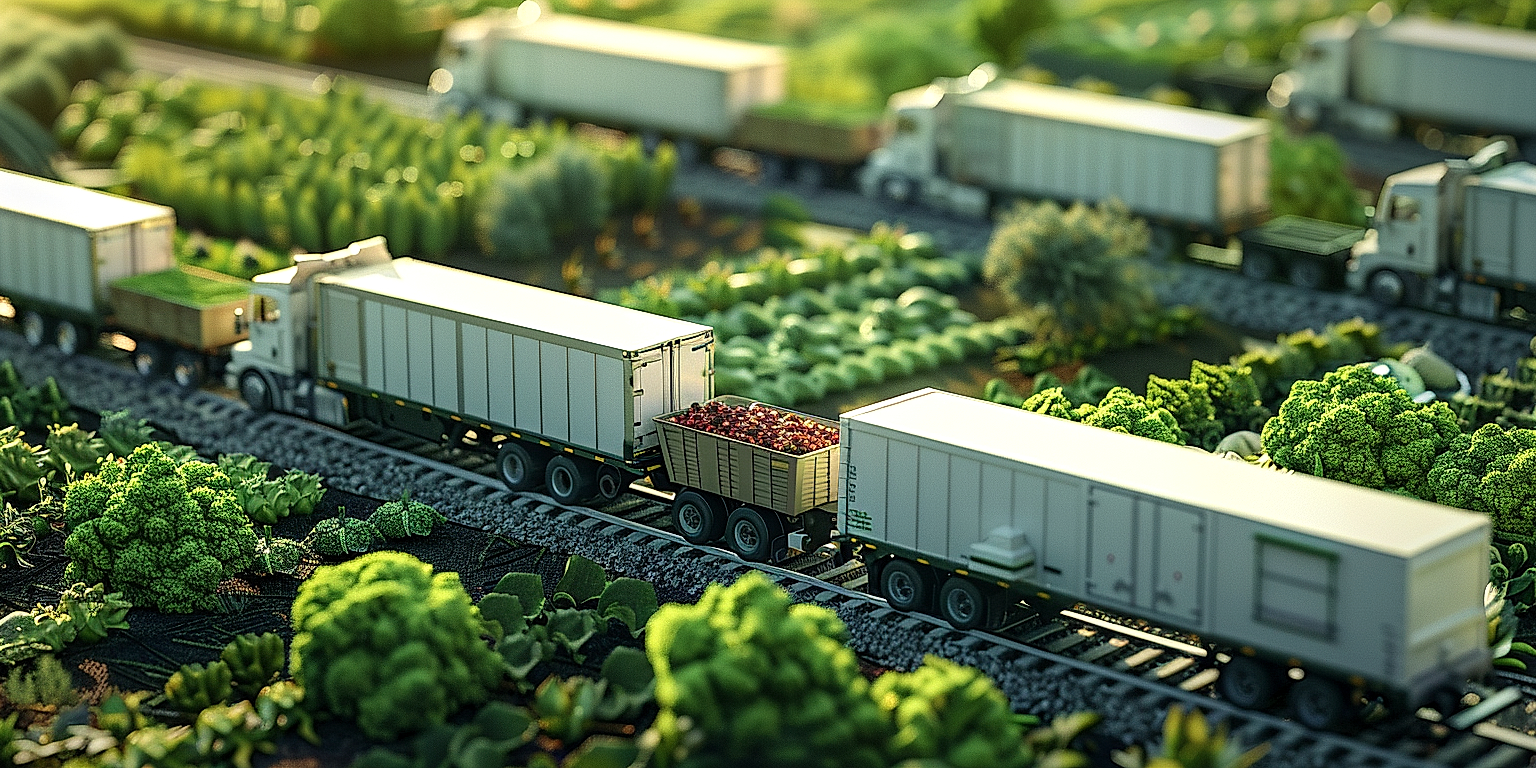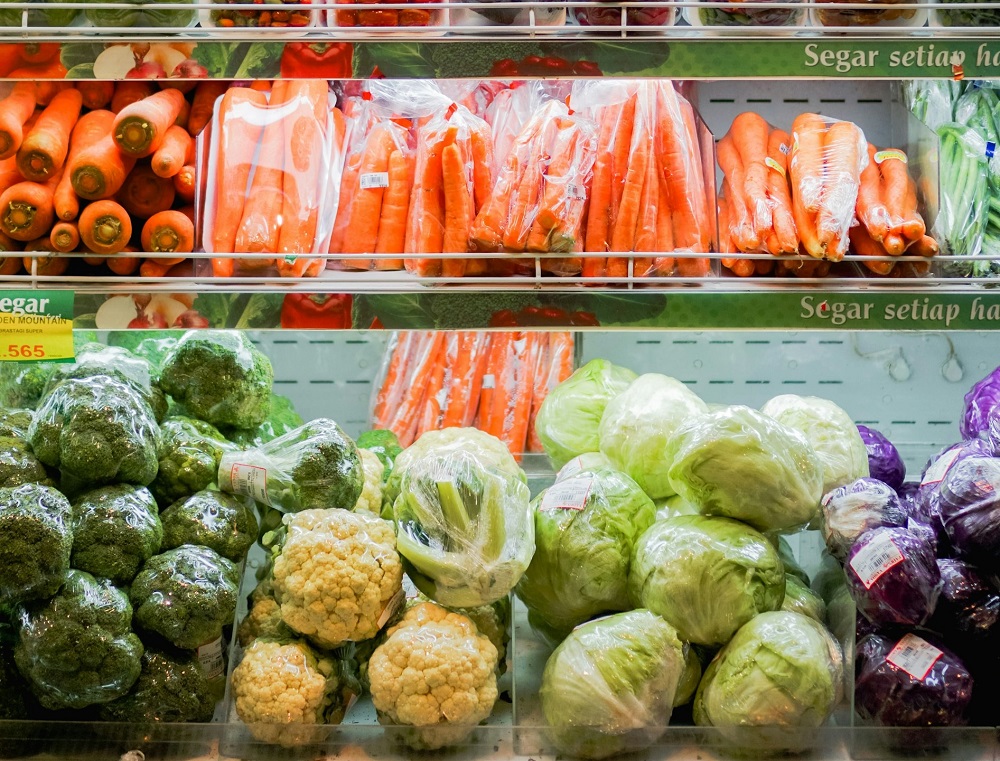In the fast-paced world of produce processing, being aware of emerging logistics trends is crucial.
Advancements in technology and changes in consumer demand are driving significant shifts in this field.
To remain competitive and efficient, industry professionals must stay informed.
This article aims to provide an essential overview of these imminent changes.
We will delve into what can be expected and how it could potentially transform the industry.
Through a comprehensive analysis, we plan to equip readers with the information needed to make strategic decisions for their operations.
Insights Into Future Logistics Trends For Produce Processing
1. Increased Use of Automation and Robotics
Automation and robotics have revolutionized many industries, and the logistics and produce processing sector is no exception.
As the demand for fresh produce continues to rise, the use of automation and robotics in the logistics chain is becoming increasingly necessary to meet this growing need.
These technologies help to streamline operations, increase efficiency, and ultimately, reduce costs.
From automated picking and packing to advanced robotic sorting and grading, new technologies are transforming the face of logistics and produce processing.
In particular, robots are playing a crucial role in ensuring high standards of hygiene and speed in the packing and distribution processes.
They are able to handle delicate fruits and vegetables safely, minimizing damage and waste, a common issue in manual handling processes.
Robotics can also operate around the clock with minimal downtime, vastly improving the speed and consistency of produce processing steps like washing, peeling, cutting, coring, and drying.
Additionally, automation reduces human contact with produce, a crucial factor given the ongoing global pandemic and the increasing emphasis on food safety and cleanliness.
The use of robotics is no longer confined to large-scale enterprises.
Advancements in technology have made it more affordable and practical for smaller businesses to adopt automation and robotics in their operations.
Drones are another technology being leveraged in this sector, helping with tasks like crop monitoring and delivery of small goods, providing a cost-effective and carbon-friendly alternative to traditional delivery methods.
However, the adoption of these technologies is not without its challenges.
The upfront investment required for automation and robotics is substantial for many companies, and the requirement for skilled employees to operate, maintain, and troubleshoot these systems is another challenge.
Despite these hurdles, the benefits of integrating automation and robotics into the logistics chain for produce processing are manifold and far-reaching, promising a future of increased productivity, efficiency, and reliability.
The potential for these technologies to revolutionize the industry is vast and undeniably exciting, ushering in a new era of ultra-efficient, high-speed logistics that could reshape the way we think about produce processing.
2. Enhanced traceability through blockchain technology
The integration of blockchain technology into the logistics of produce processing presents a significant shift towards improving traceability.
This digital ledger system is designed to store transactions and track assets in a network.
The adaptability of this technology allows for its application across various industries, with agriculture, particularly produce processing, not being an exception.
Blockchain technology is regarded as a revolutionary tool for enhancing transparency and traceability in food supply chains.
The technology’s inherent capability to offer a secure and decentralized consensus has strengthened trust among supply chain stakeholders.
By leveraging blockchain technology, businesses can provide real-time tracking of produce, from farm to table, addressing concerns around food safety, freshness, and fairness in trade.
The main advantage of blockchain is its capability to create a chain of custody, offering quality assurance and minimizing fraud.
This chain of custody is crucial in today’s market, where consumers are increasingly interested in knowing the origin of their food and ensuring it meets their values in terms of sustainability and fair trade.
Therefore, blockchain can aid in the creation of a more transparent food supply chain, instilling trust among consumers about the origin and journey of their food.
Furthermore, food suppliers and retailers can utilize blockchain data to pinpoint any irregularities or disruptions in the supply chain, enabling fast and efficient recall processes to mitigate any potential risks associated with food safety.
It’s also important to note that blockchain facilitates the sharing of data amongst all participants in the supply chain, including farmers, processors, distributors, and retailers, promoting uniformity and synchronicity.
This helps in eliminating errors that may occur due to manual data entry and accelerates the process of shipment and delivery by reducing the need for intermediary checks.
However, the successful implementation of blockchain in supply chain management comes with several challenges, including data privacy issues and the requirement for standardization across different systems and organizations.
In spite of these challenges, there is an undoubted consensus that blockchain technology holds an immense potential in transforming the current state of logistics in produce processing, enhancing traceability, and bringing about a greater level of transparency in the supply chain.
As with any emerging technology, the success of integrating blockchain into produce processing logistics will primarily depend on the collaborative adoption by all stakeholders across the supply chain.
With ever-increasing market demands for traceability and transparency, companies are likely to invest in leveraging blockchain technology for logistics solutions, shaping the future of produce processing logistics.
3. Wider Adoption of AI for Inventory Management
The potential for AI to revolutionize inventory management in produce processing cannot be overstated.
AI technologies, such as machine learning and predictive analytics, can provide intelligent insight into inventory levels, informing crucial decisions and facilitating precision in processing and delivery.
These technologies enable real-time tracking of inventory, allowing for more accurate forecasts and the proactive management of supply and demand.
Trends indicate that the use of AI in inventory management will continue to grow, particularly in the produce processing sector where the perishability of goods makes efficient inventory management critical.
The integration of AI has the potential to reduce waste, optimize storage, and improve overall supply chain efficiency in the produce processing industry.
Produce companies are increasingly leveraging AI technology to monitor product conditions in real-time, minimizing waste and ensuring optimal quality.
AI tools can identify patterns in data that humans may overlook, helping to forecast demand more accurately and manage inventory proportionately.
This is particularly relevant in the context of seasonality, where the ability to predict consumer demand can minimize waste and prevent stock shortages.
Another significant benefit of using AI for inventory management is the ability to make data-driven decisions that improve operational efficiency.
For example, AI could identify relationships between different factors affecting inventory levels, such as sales trends, market fluctuations, and weather patterns, which could influence the amount of produce required at different times.
AI can also assist in maintaining optimal stock levels. By analyzing sales data, AI can help predict future demand, facilitating more efficient inventory management.
Accurate forecasting of stock requirements can ensure the right balance between availability of fresh produce and minimizing waste.
This reduces the financial burden often associated with overstocking or understocking, ensuring higher profitability for produce processing companies.
The wider adoption of AI in inventory management is a promising trend in the logistics sector, offering an innovative solution to some of the most challenging aspects of produce processing.
Through improved forecasting, wastage minimization, and streamlined operations, AI has the potential to substantially improve the efficiency and sustainability of the produce processing industry.
4. Embrace of Green, Sustainable Logistics Solutions
With growing global concern over the environment, there is a notable rise in the demand for green, sustainable logistics.
The logistics sector has recognized the urgent need to curb its carbon footprint and is taking significant steps towards employing eco-friendly solutions.
These practices constitute the use of biodiesel fuels, adopting electric vehicles for transport, and executing efficient route planning to minimize fuel consumption.
Businesses are also taking advantage of green warehousing, an initiative that promotes the reduction of waste, energy saving, and recycling.
Blockchain technology further bolsters this adoption by providing a platform for credible, transparent tracking of the carbon footprints of the logistics.
This technological intervention affirms the dedication to sustainability by holding every stakeholder accountable and encourages organizations to maintain sustainable standards in their supply chain.
Notably, adopting green logistics solutions is not just an ethical decision.
There is a significant profit potential for businesses that manage to conserve resources and reduce waste, ultimately lowering operating costs.
Moreover, consumers increasingly respect companies that demonstrate a clear commitment to sustainability.
Therefore, the adoption of green, sustainable logistics solutions can also serve as a powerful marketing tool, enhancing brand image and consumer loyalty.
Artificial Intelligence (AI) can play an indispensable role in facilitating green logistics by optimizing routes and inventory, reducing waste and energy consumption.
Additionally, the integration of AI can lead to the development of fully-automated, electric cargo drones and robots that would further reduce the logistics sector’s overall emissions.
However, while sustainable logistics hold immense potential, implementation can be challenging due to the relative novelty of green technologies of the logistics.
There may be issues of compatibility with existing systems, the need for significant upfront investment, and training staff to effectively use the new technologies.
Nonetheless, efforts like green certifications, government incentives, and pressure from environmentally-conscious consumers can help drive this trend forward.
Overall, the adoption of green, sustainable logistics solutions is not only an investment in the future of the planet, but also a lucrative opportunity for businesses in the logistics sector.
5. Rising Demand for Cold Chain Logistics
The logistics industry is witnessing a significant rise in the demand for cold chain logistics, particularly in the produce processing sector.
This can be largely attributed to the escalating global demand for fresh and quality products.
With consumers’ increasing consciousness towards health, the demand for perishable food products has surged, thereby enforcing the need for cold chain logistics.
In essence, cold chain logistics play an integral role in transporting fresh produce from farms to consumers, maintaining its quality and shelf-life.
In a bid to effectively cater to this demand, logistics companies are heavily investing in cold storage facilities and refrigerated transportation systems.
These systems are technologically advanced and have the ability to maintain a consistent temperature, thus ensuring the freshness and quality of the food items.
For instance, the use of IoT devices and data analytics in these systems allows for real-time monitoring and precise control of temperature conditions.
Moreover, the cold chain logistics also has significant implications on the global supply chain dynamics.
It is enabling more efficient and reliable export and import of perishable goods, thereby strengthening the international trade relationships.
It is also particularly crucial for the distribution and availability of temperature-sensitive goods like pharmaceutical products and vaccines, especially during global health emergencies.
The rise in e-commerce retailing of grocery and food items is yet another factor propelling the demand for cold chain logistics.
The failure to maintain proper cold chain conditions often leads to huge losses due to food spoilage, further highlighting its necessity and market growth potential.
However, despite its significant role, there are several challenges posed by the cold chain logistics such as high operation costs, energy consumption, maintaining the consistency in temperature conditions, and infrastructure constraints in certain markets.
Nevertheless, the continuous innovations and advancements in technology are expected to overcome these hindrances and further propel the market growth.
Therefore, it can be said that the future of logistics in produce processing would significantly be driven by the continuous rise in demand and advancements in the cold chain logistics sector.
The Bottom Line
Following these emerging logistics trends, it becomes vividly clear that the future of the logistics sector is promisingly progressive.
The application of advanced technologies including automation, robotics, artificial intelligence and blockchain could dramatically enhance operational efficiencies, improve traceability and revolutionize inventory management, supporting the entire supply chain to a large extent.
Concurrently, as sustainability remains a paramount concern, the sector’s embrace of eco-friendly logistics solutions is commendable.
The surge in demand for cold chain logistics also implies newer avenues for growth for the industry.
Altogether, these factors collectively lay the foundation for a more efficient, transparent, and sustainable future in the logistics space.




